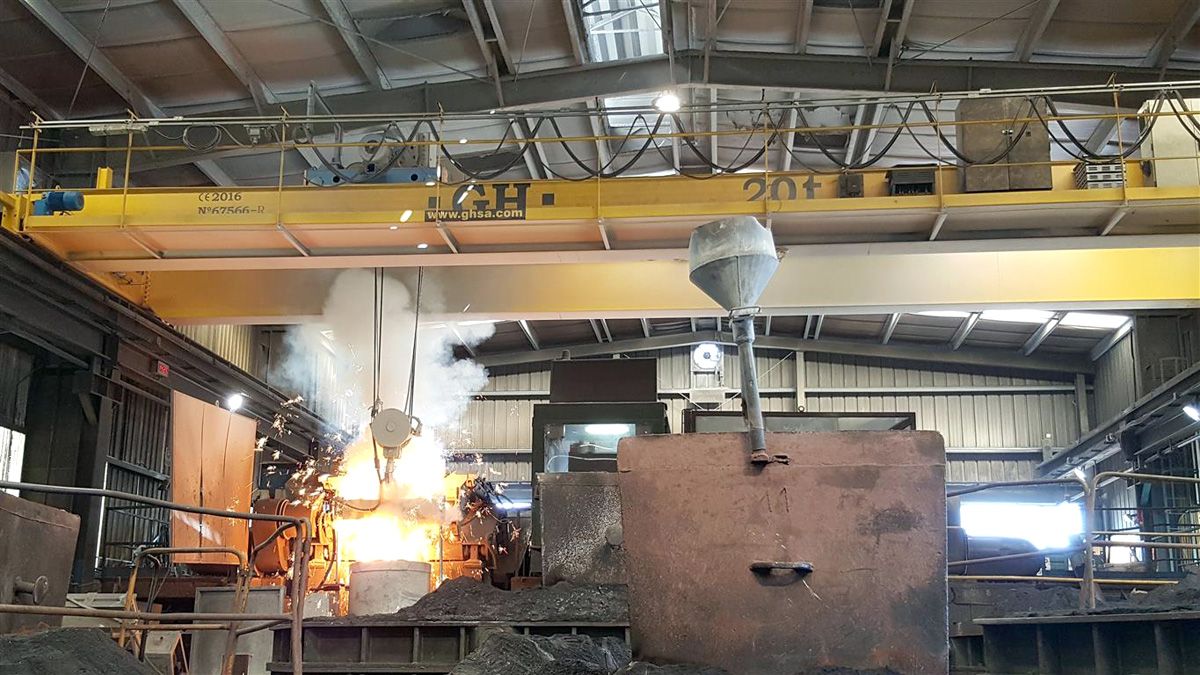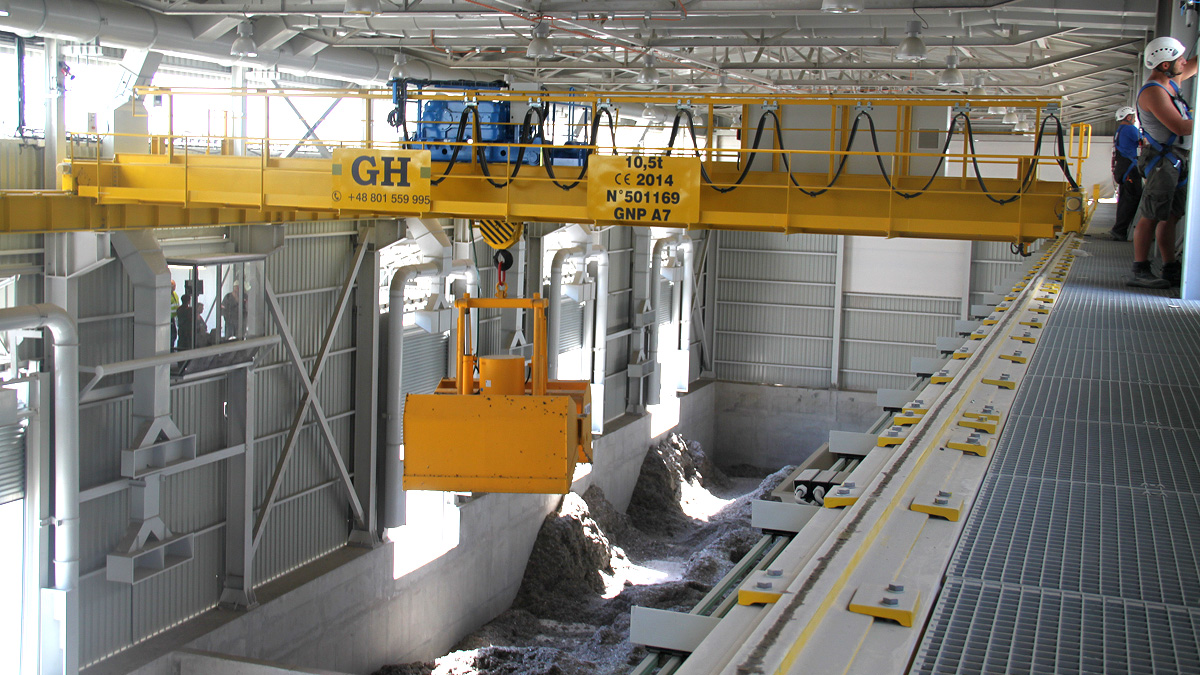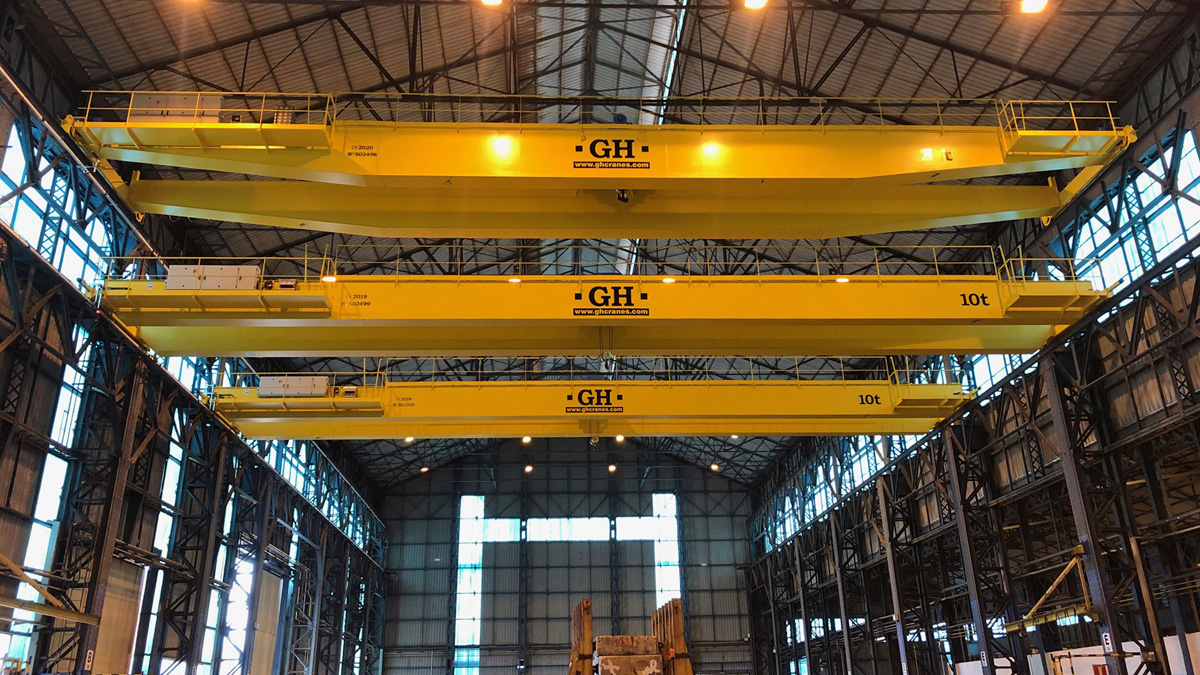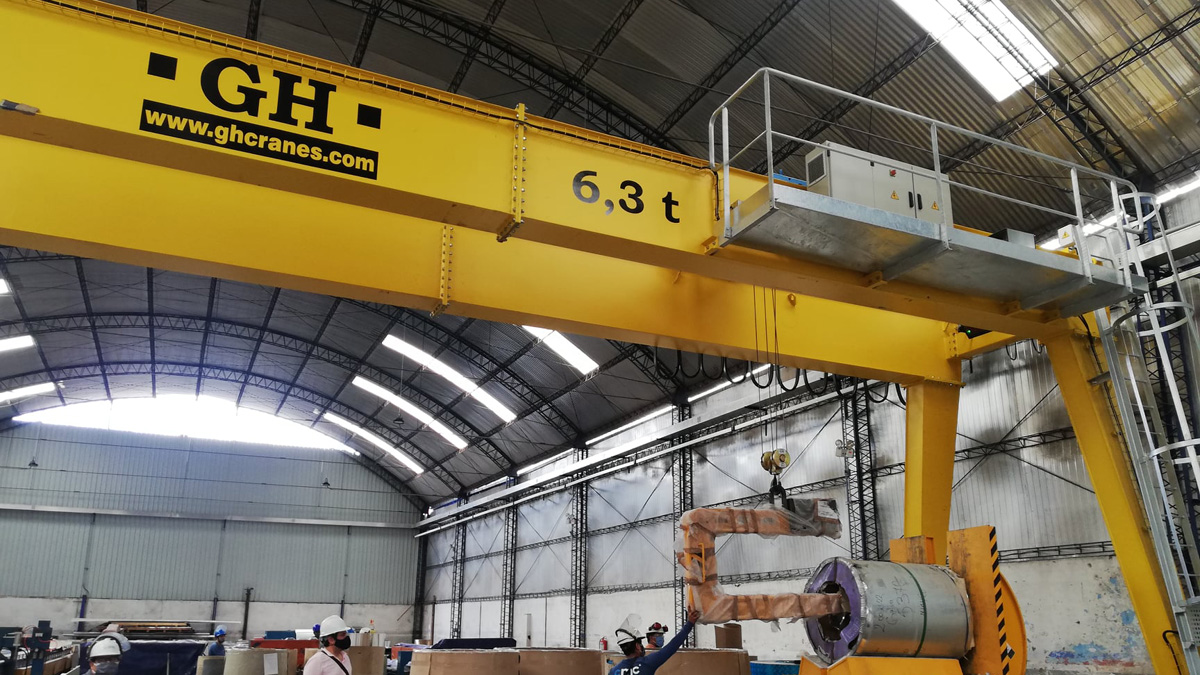Designing an overhead crane is a complex process that must address a wide range of factors to ensure maximum efficiency, safety, and durability. At GH Cranes, we understand the importance of adapting our overhead cranes to the specific needs of each client and work environment, optimizing their performance in every project. Below, we explore some of the most important aspects to consider when designing an overhead crane.
1) Operating Temperature

The temperature of the environment where the crane will operate is a crucial factor. If the overhead crane will be working in extreme temperatures, either hot or cold, specific adaptations are required:
- In high-temperature environments, it’s essential to incorporate additional cooling, such as enclosed cabinets with air conditioning.
- In cold conditions, it’s important to ensure that motors and key components are designed to withstand low temperatures, preventing performance issues.
2) Working Environment
The environment in which the overhead crane operates directly influences the design and materials used:
- If the crane will be exposed to dirt, dust, or abrasive particles, such as in the solid waste or cement industries, components with special protection, such as the appropriate IP rating, should be used.
- Overhead cranes that work in outdoor environments or near the sea require special paint treatments and corrosion protection to ensure durability.
- Additionally, it is recommended to install protective covers for motors and other key components to reduce the risk of failures in adverse environmental conditions.

3) Operating Altitude
The altitude at which the overhead crane will be installed can affect motor performance due to changes in atmospheric pressure. At higher altitudes, it’s necessary to adjust the design and select motors that can maintain optimal performance. Specific formulas and tables are used to calculate how altitude affects crane operation.
4) Presence of Other Cranes in the Installation

When multiple overhead cranes operate in the same facility, several factors must be considered to avoid incidents:
- Installing anti-collision detectors is essential if multiple cranes share the same operating line.
- If cranes are positioned at different heights, advanced software is required to prevent crossing paths.
- Synchronization between cranes for load transfers between different sections or aisles also requires proper design, using master/slave systems to ensure safe and efficient operation.
5) Work Area
It’s important for overhead cranes to be equipped with software that defines safety zones within the installation. This software restricts the crane or hoist’s movement in specific areas to prevent accidents or damage to equipment and structures.
6) Type of Load to Handle
Each type of load has its own characteristics, so the design of the overhead crane must be tailored to these needs:
- Some loads may require special tools or attachments for safe handling.
- The weight and specific characteristics of the load also play a key role in selecting the most appropriate hoists and lifting systems.

7) Work Rate and Frequency
The work rate of the overhead crane is a critical factor to consider:
- For high-frequency or continuous operations, it’s essential to use high-durability components and work groups that can withstand this level of demand.
- The inclusion of overload control and precision systems is crucial to ensure smooth and safe operation.
- To maximize operational availability, redundant systems can be installed, allowing work to continue uninterrupted in the event of technical issues.
- Depending on the client’s needs, automatic or semi-automatic control systems can be implemented, improving precision and operational efficiency.
Conclusion
Designing an efficient and safe overhead crane depends on careful planning that takes into account a wide range of factors, from environmental conditions to load characteristics and operational requirements. At GH Cranes, we are committed to offering customized solutions that optimize the performance of overhead cranes in any work environment, always ensuring maximum safety and efficiency.
If you’re looking for a tailor-made solution for your lifting needs, contact us to explore how we can help you design the perfect overhead crane for your project.
